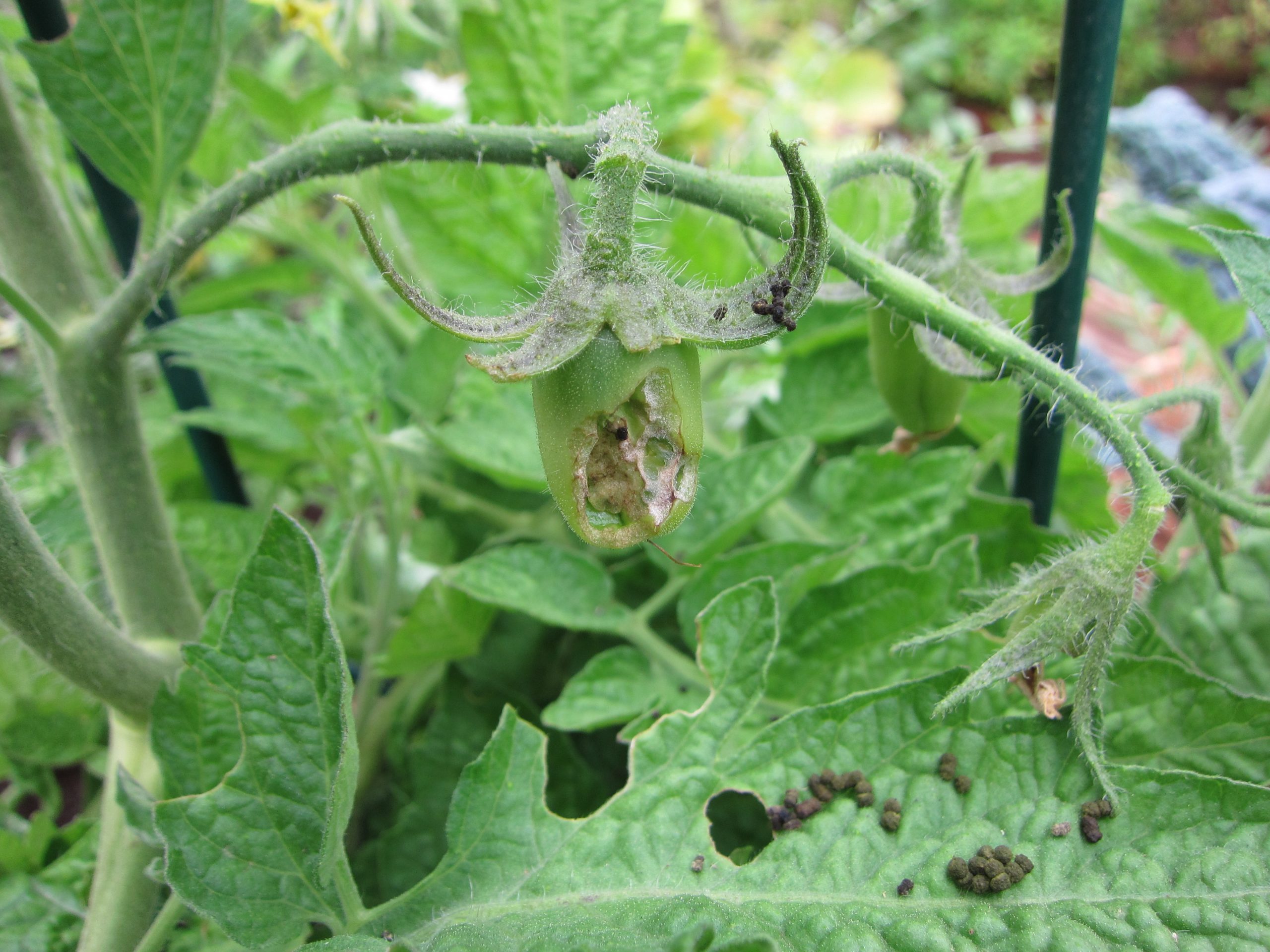Several questions came in all at once from David this week. He asks, “How do I get rid of flies that like to hang around in my back yard and bask in the sunlight? Also, why would my tomato plants not produce any fruit? The flowers just shrivel up and die. AND, what can I do to prevent the worms from eating my tomato’s and apples? Thank you.”
Those are all great questions, David, with varied answers. Let’s start with flies:
Flies

Many people hang fly catchers in their backyards to keep flies to a minimum. There are plenty of articles and YouTube videos about how to make your own. If you have a pet, the flies are probably colonizing on nearby animal feces, or in your neighbor’s yard, so be sure to clean that up daily to interrupt the life cycle.
Tomatoes
If your tomato plants are dropping flowers, it is one of two things: temperatures over 90 degrees cause flowers to drop without setting fruit, or you do not have enough potassium and phosphorus in your soil. Tomatoes are heavy feeders and require more nutrients than other plants. Use an organic fertilizer (I recommend doing a simple NPK soil test first to see if you are low in these nutrients) to amend based on test results.
Tomato Worms & Apple Worms

Worms in apples are different from tomato worms. Tomato worms are blacklight reactive, so you can bring a blacklight out at night and wave it over your plants to easily locate and remove tomato worms. Worms in apples are caused by coddling moths. Here is an article on how to prevent them.
I hope that helps, David, and thanks for writing in. If you like these tips, find more like them in my new book, 400+ Tips for Organic Gardening Success. It will help you in your garden year-round.






How do you keep your cat out of your garden beds? We have a neighbor’s cat who likes to use mine as litter boxes. I’ve even set up an outdoor litter box to lure her away from the beds but if I don’t keep it very clean she goes back to the beds, plus it’s a problem when it rains and the litter box gets wet.
I am fortunate to have a cat with no interest in pooping in my garden beds. Cats tend to use garden beds as a little box when they are bare or almost bare. Once they are planted they don’t like the competition. That said, if you are still having trouble try Cat Scat Mats. They are mini beds of nails (though plastic) that cats don’t like to touch. You can find them at Gardener’s Supply online. They help train cats away from bad habits.
I’ve seen several grasshoppers among my lettuce and tomato plants. Will they cause damage? If so, how do I get rid of them? Thanks.
Grasshoppers are troublesome, and since they pupate in the soil, they can be hard to get rid of. My first line of defense against grasshoppers is bird netting over my crops. That helps reduce access. Next, boost your soil food web to introduce predators that eat eggs and pupating young to interrupt the life cycle. Above ground, you can hang suit cakes to encourage kestrels and other birds that eat grasshoppers (we have a cat who loves them as well). Praying mantis are also predators of grasshoppers. Set up your ecosystem to encourage these predators and you’ll achieve balance once again.
WOW! I had no idea that tomato horn worms were blacklight reactive, nice tip